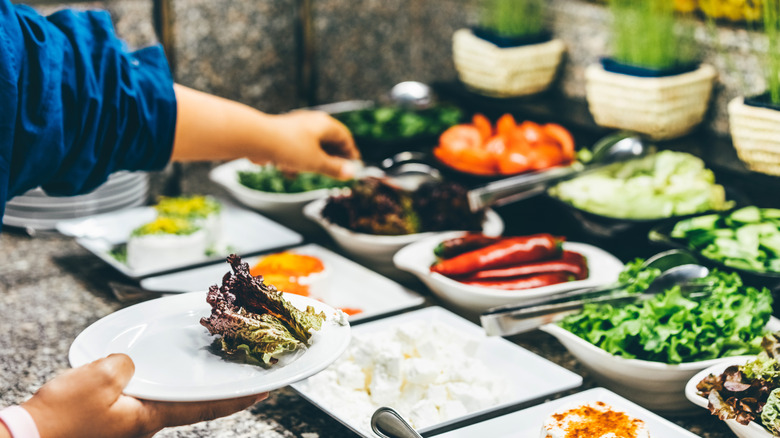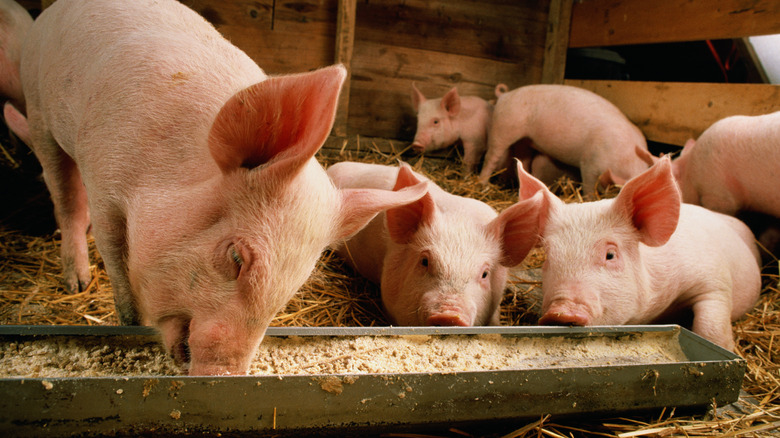What Do Vegas Buffets Do With Leftovers? Definitely Not What You Think
Gambling may be the first thing you think of when you think of Las Vegas, but the next thing is likely buffets. Sin City is home to some of the best buffets in the country. But we all know as delicious as a buffet can be, it's guaranteed to create food waste. One of the most common mistakes people make at buffets is overloading their plates, leading to lots of leftovers. And restaurants know leaving food sitting out too long is one of the biggest red flags at a buffet, so anything that hasn't been touched after a certain point becomes leftovers, too.
Around 42 million tourists flock to Vegas each year, many patronizing the city's dozens of buffets. The Bacchanal Buffet at Caesars Palace alone offers 500 different food items to 3,500 daily guests, and a good amount of this goes uneaten. It's estimated that The Strip's MGM properties generate about 160,000 pounds of food waste on their own per day, and overall, Vegas ends up with about five billion pounds of waste annually; a lot of that is food. So what to do with buffet leftovers? Feed it to pigs, of course. A pig farm may be far from your mental image of Sin City, but R.C. Farms, now Las Vegas Livestock, is a major local operation. Hotels and casinos like those MGM properties give their leftovers to the farm to feed the animals sustainably and find an eco-friendly food-waste solution.
Vegas buffets keep improving their food-waste fixes
The best place for leftover food to go is naturally to hungry people — the Environmental Protection Agency places this at the top of their food recovery hierarchy right under reducing the amount of food ordered in the first place. But leftovers aren't always in good enough condition to donate, so the next best option is to feed it to animals. Las Vegas Livestock has around 4,000 pigs that eat up to 20 tons of food scraps per day, helping with a good chunk of buffet leftovers.
The city, however, is always working on better ways to make use of the rest. In studies, Nevada has proven to be one of the most wasteful states in the country, with food waste a major contributor. To combat this, many resorts are looking to stay ahead of the problem by more carefully tracking consumption so they order food more efficiently. Of the leftovers they still end up with, once the pigs of the city have been fed, many buffets engage in composting practices. MGM dries its oyster shells out and sends them to Maryland to aid in restoring oyster beds, and uses a high-tech system to freeze buffet leftovers that haven't been touched so they are in sufficient shape to donate to food banks. It's fun to think about pigs enjoying fancy buffet food, but you can also help when at Vegas buffets by only taking what you think you can eat.

